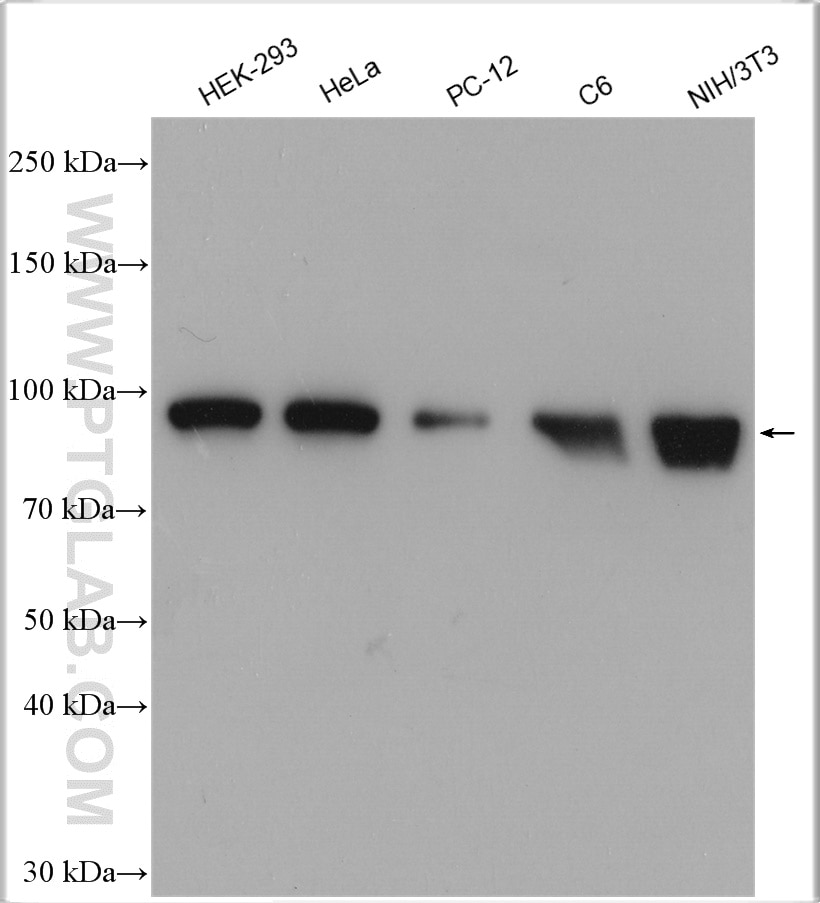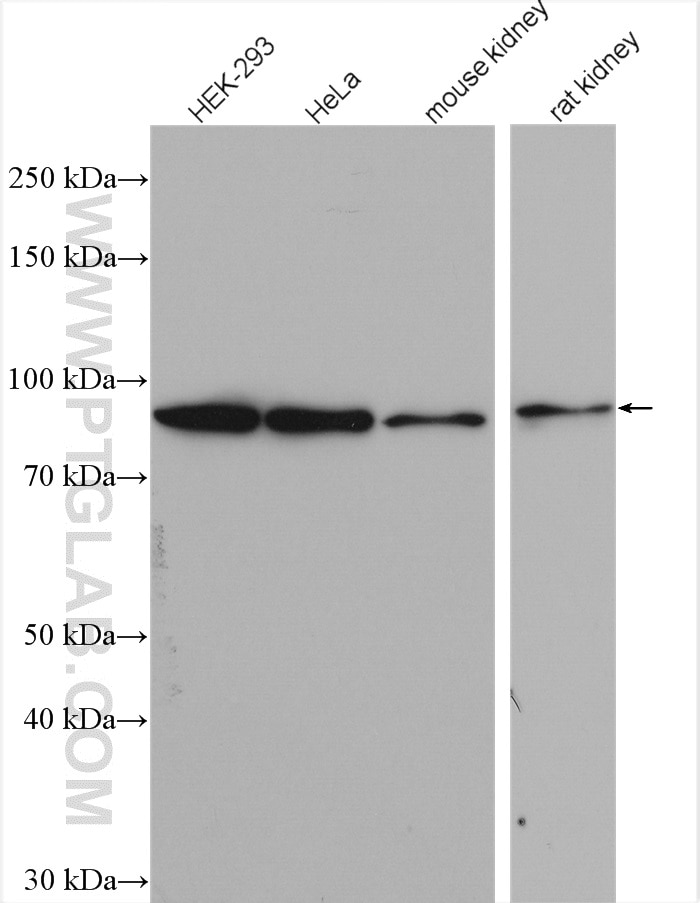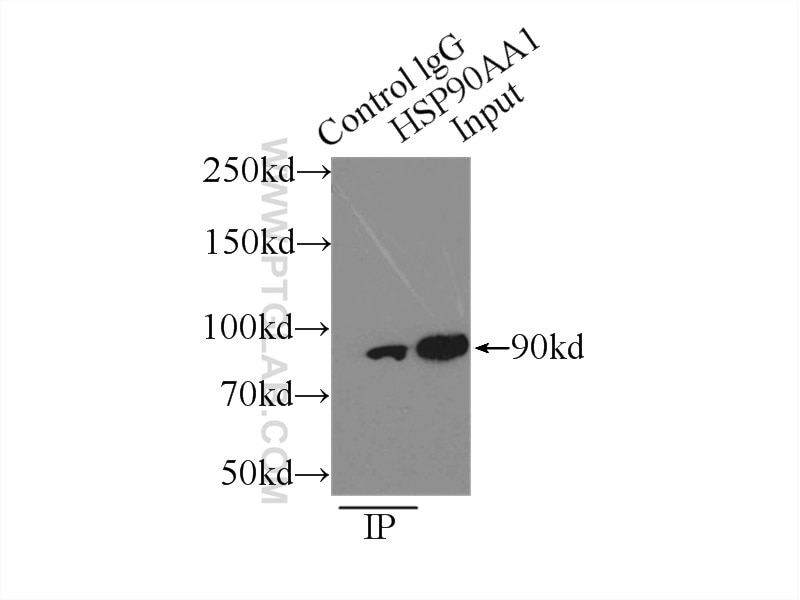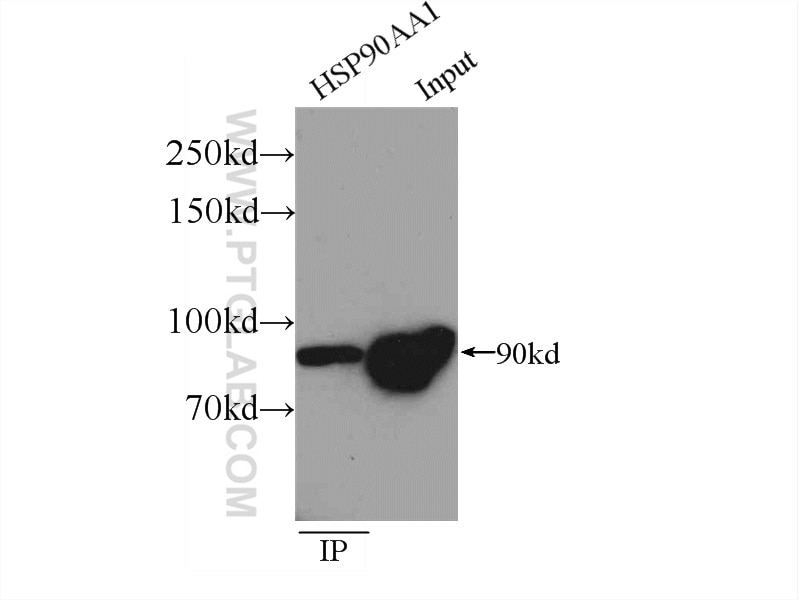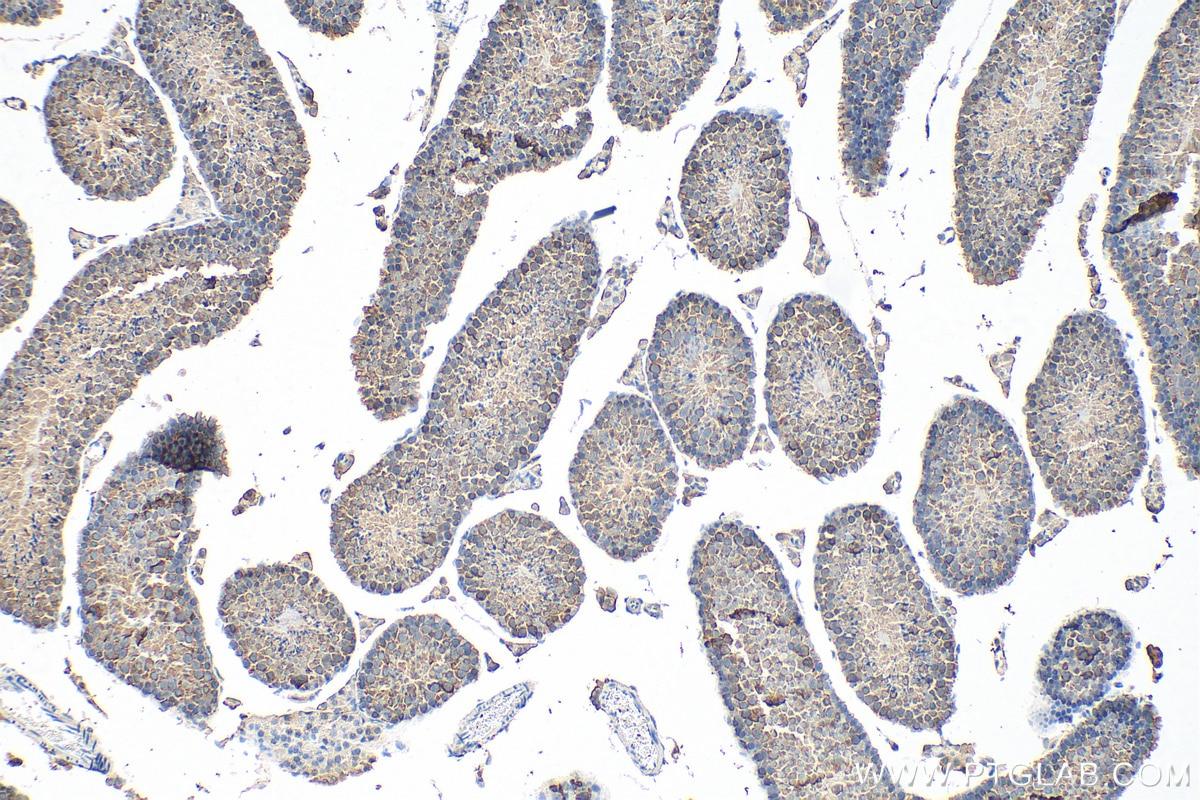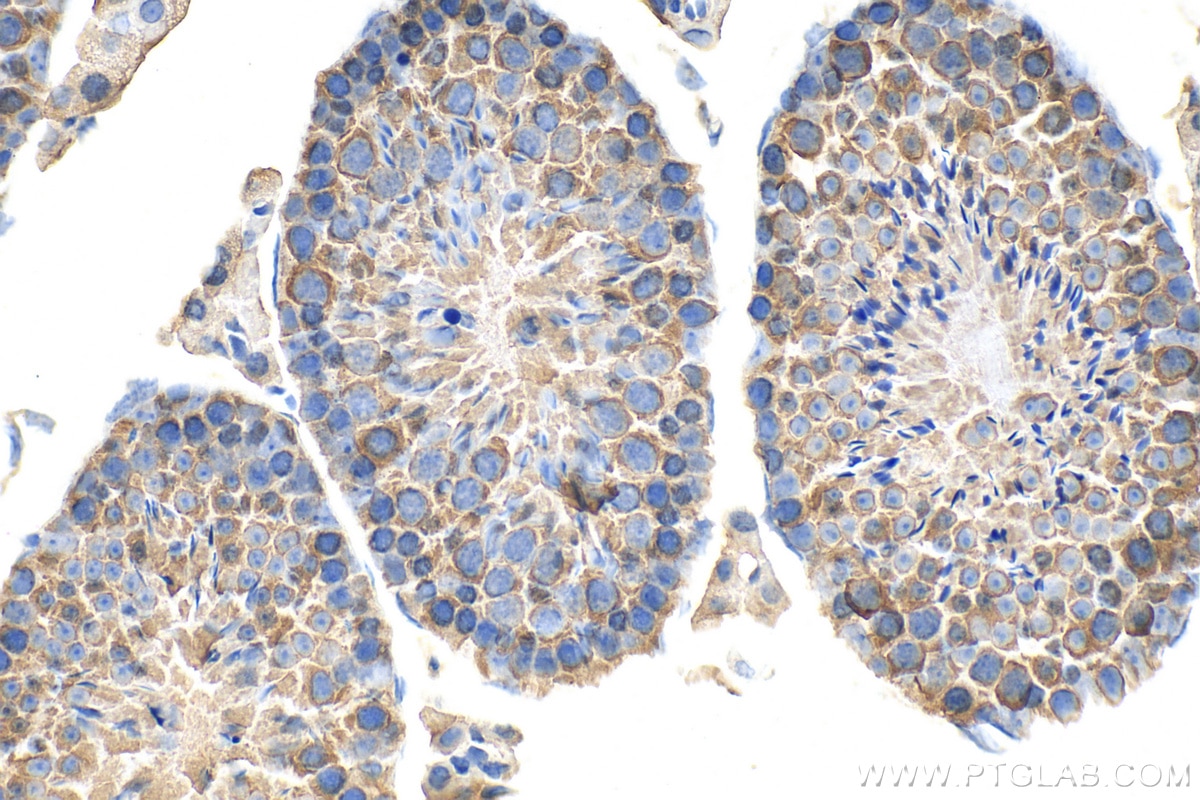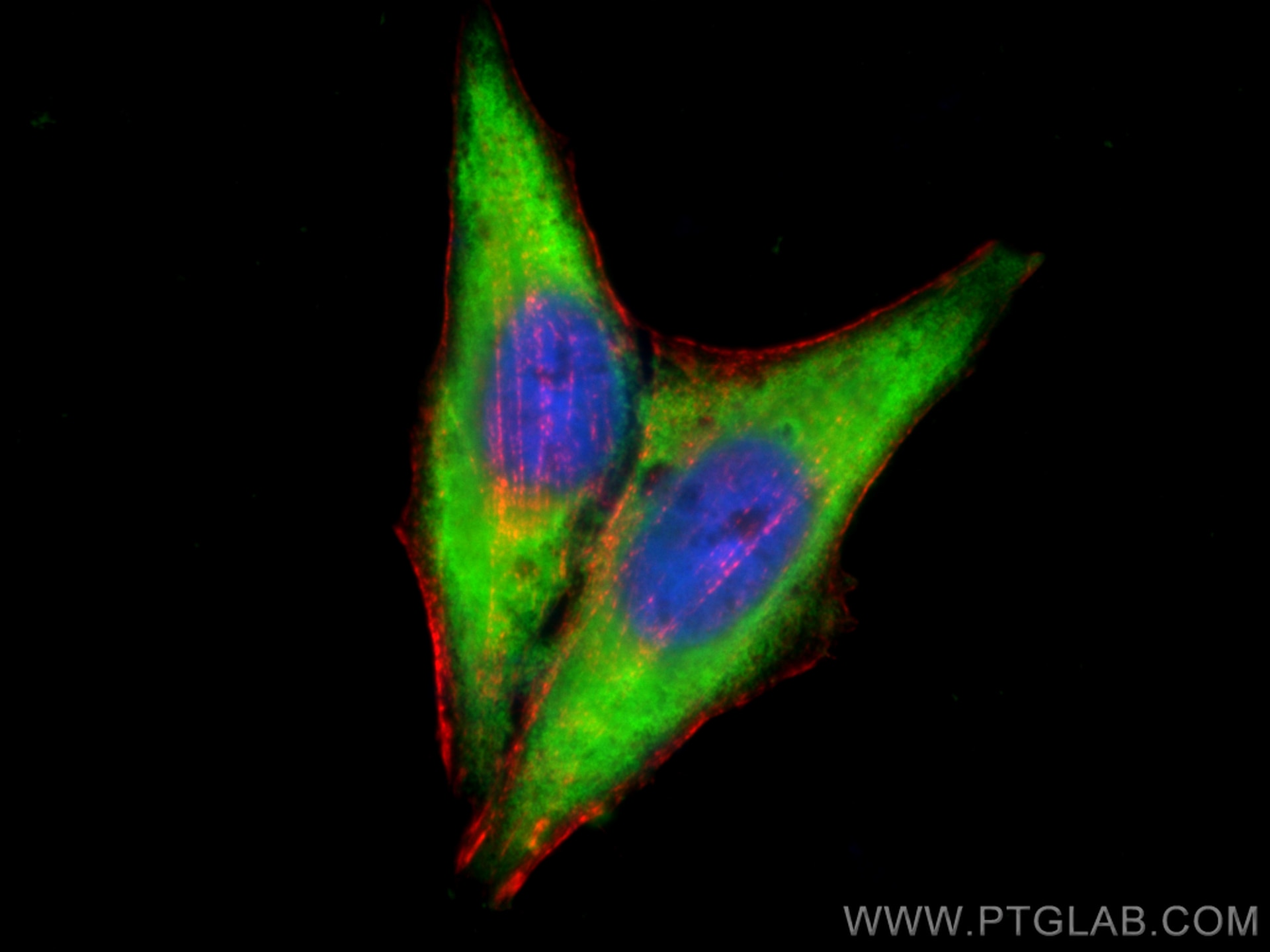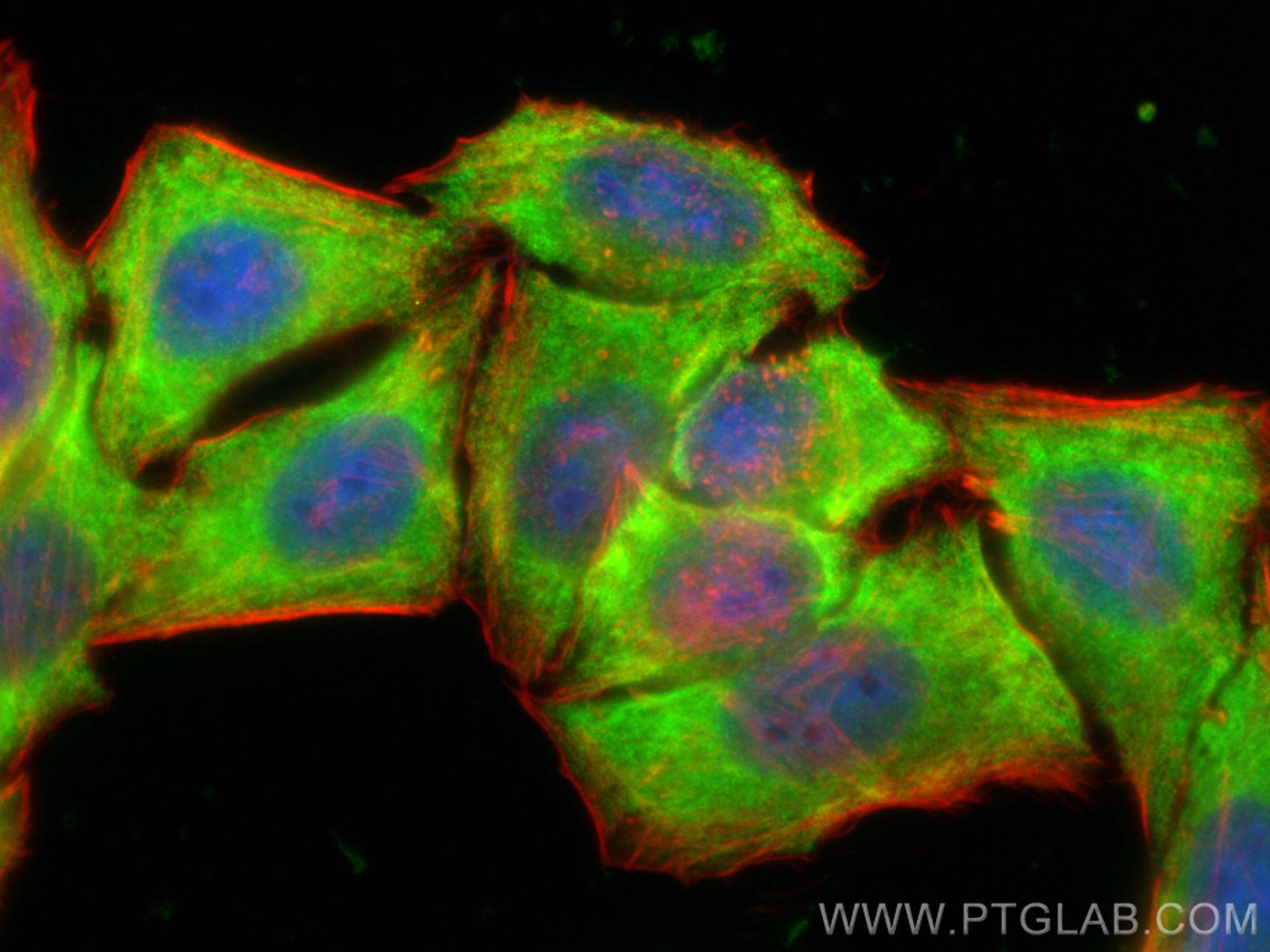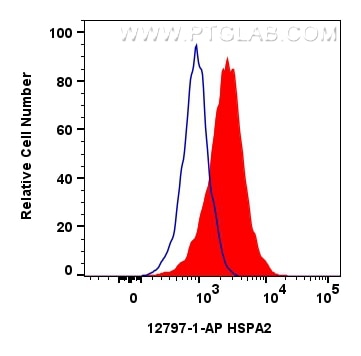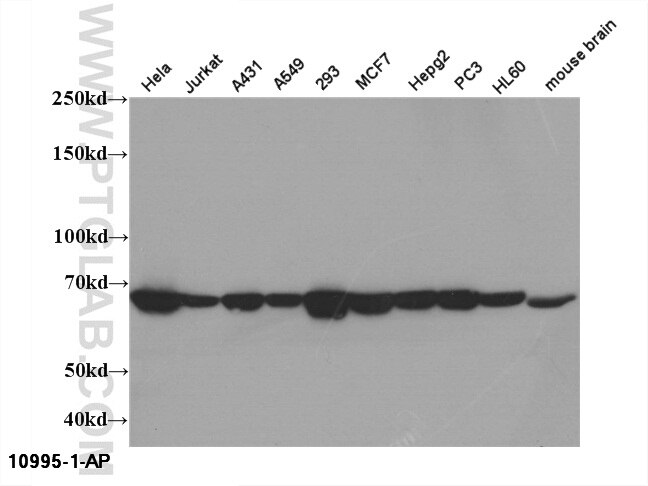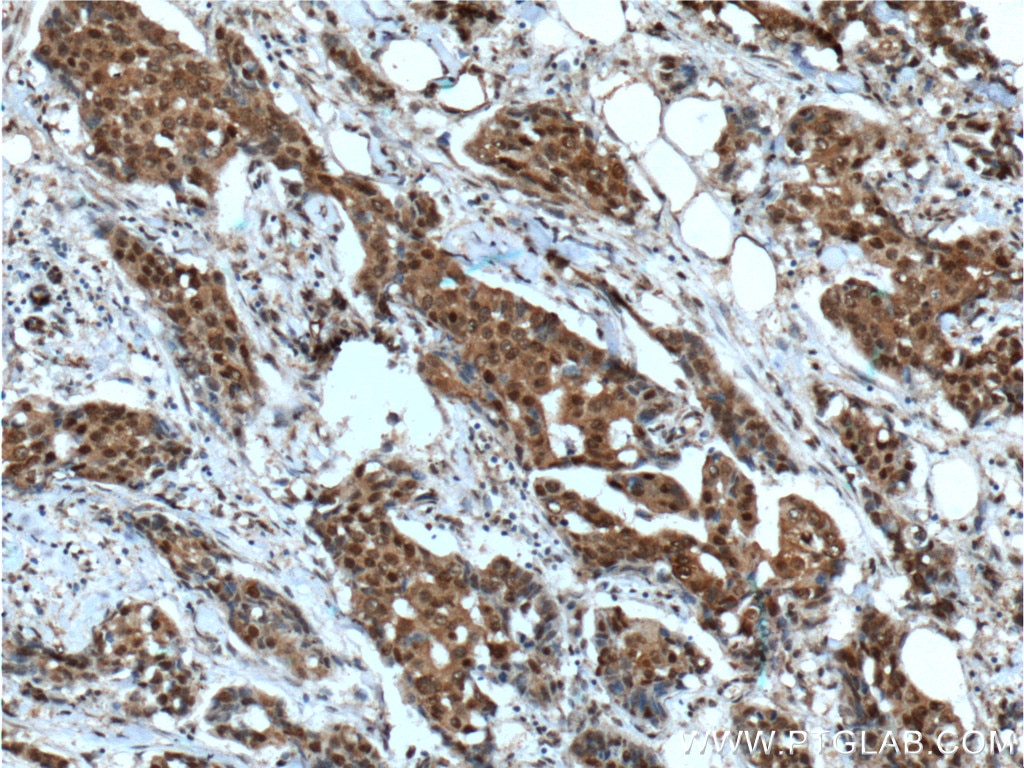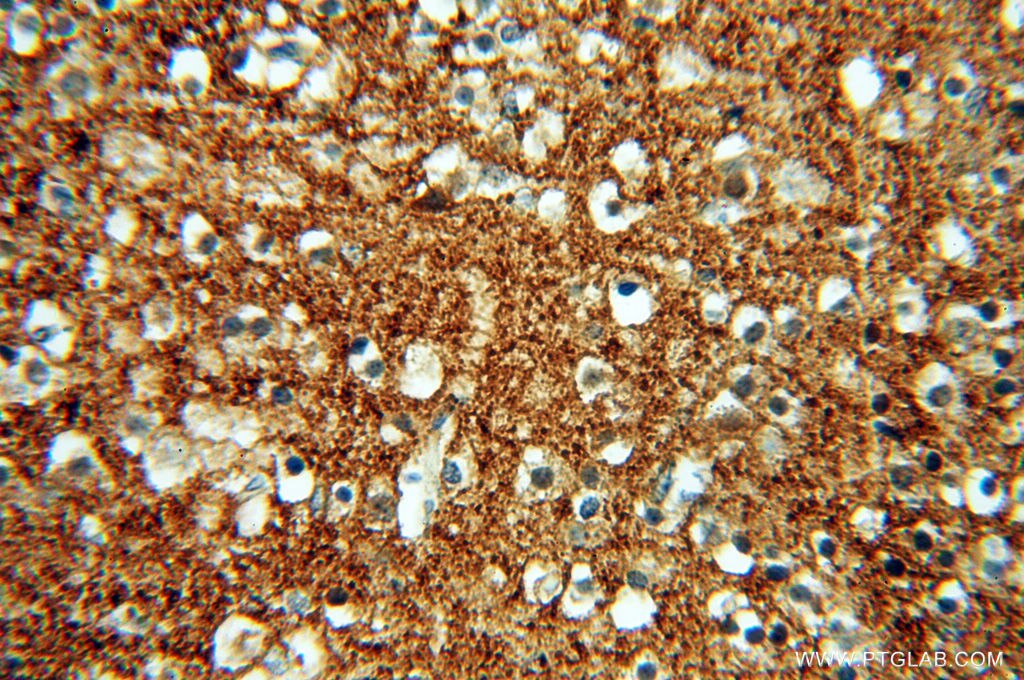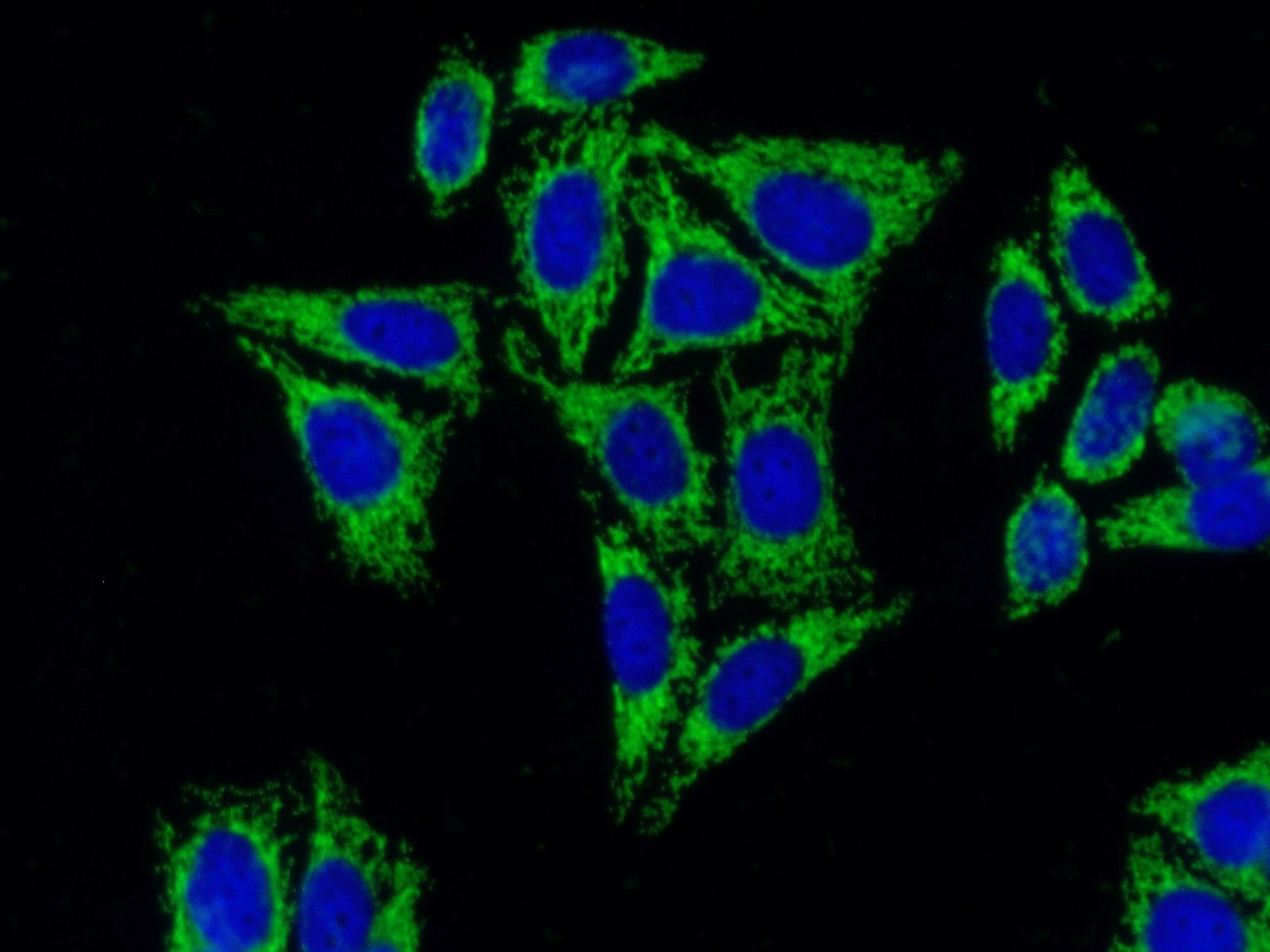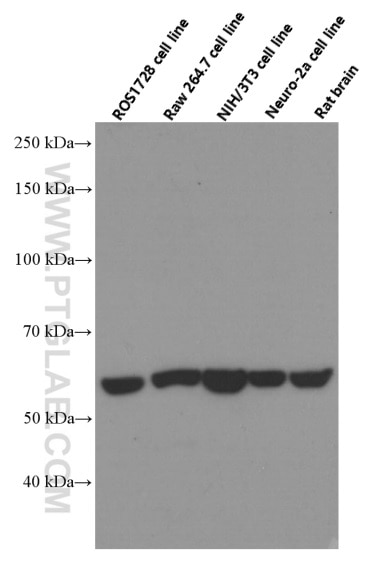- Phare
- Validé par KD/KO
Anticorps Polyclonal de lapin anti-HSP90
HSP90 Polyclonal Antibody for WB, IHC, IF/ICC, FC (Intra), IP, ELISA
Hôte / Isotype
Lapin / IgG
Réactivité testée
Humain, rat, souris et plus (4)
Applications
WB, IHC, IF/ICC, FC (Intra), IP, CoIP, RIP, ELISA
Conjugaison
Non conjugué
286
N° de cat : 13171-1-AP
Synonymes
Galerie de données de validation
Applications testées
| Résultats positifs en WB | cellules HEK-293, cellules C6, cellules HeLa, cellules NIH/3T3, cellules PC-12, tissu rénal de rat, tissu rénal de souris |
| Résultats positifs en IP | cellules K-562, cellules HeLa |
| Résultats positifs en IHC | tissu testiculaire de souris, il est suggéré de démasquer l'antigène avec un tampon de TE buffer pH 9.0; (*) À défaut, 'le démasquage de l'antigène peut être 'effectué avec un tampon citrate pH 6,0. |
| Résultats positifs en IF/ICC | cellules HepG2, |
| Résultats positifs en FC (Intra) | cellules HeLa, |
Dilution recommandée
| Application | Dilution |
|---|---|
| Western Blot (WB) | WB : 1:2000-1:16000 |
| Immunoprécipitation (IP) | IP : 0.5-4.0 ug for 1.0-3.0 mg of total protein lysate |
| Immunohistochimie (IHC) | IHC : 1:2000-1:8000 |
| Immunofluorescence (IF)/ICC | IF/ICC : 1:200-1:800 |
| Flow Cytometry (FC) (INTRA) | FC (INTRA) : 0.40 ug per 10^6 cells in a 100 µl suspension |
| It is recommended that this reagent should be titrated in each testing system to obtain optimal results. | |
| Sample-dependent, check data in validation data gallery | |
Informations sur le produit
13171-1-AP cible HSP90 dans les applications de WB, IHC, IF/ICC, FC (Intra), IP, CoIP, RIP, ELISA et montre une réactivité avec des échantillons Humain, rat, souris
| Réactivité | Humain, rat, souris |
| Réactivité citée | rat, bovin, Humain, porc, poulet, souris, fish |
| Hôte / Isotype | Lapin / IgG |
| Clonalité | Polyclonal |
| Type | Anticorps |
| Immunogène | HSP90 Protéine recombinante Ag3826 |
| Nom complet | heat shock protein 90kDa alpha (cytosolic), class A member 1 |
| Masse moléculaire calculée | 853 aa, 90 kDa |
| Poids moléculaire observé | 90 kDa |
| Numéro d’acquisition GenBank | BC023006 |
| Symbole du gène | HSP90 |
| Identification du gène (NCBI) | 3320 |
| Conjugaison | Non conjugué |
| Forme | Liquide |
| Méthode de purification | Purification par affinité contre l'antigène |
| Tampon de stockage | PBS avec azoture de sodium à 0,02 % et glycérol à 50 % pH 7,3 |
| Conditions de stockage | Stocker à -20°C. Stable pendant un an après l'expédition. L'aliquotage n'est pas nécessaire pour le stockage à -20oC Les 20ul contiennent 0,1% de BSA. |
Informations générales
HSP90, encoded by HSP90AA1, is a constitutively and ubiquitously expressed molecular chaperone that is crucial for the stability and function of many proteins. HSP90 provides chaperoning activity for client proteins; many of them are members of oncogenic pathways, indicating its implication in tumor malignancy. HSP90 mainly resides in the cytosol, while it can also be released to the extracellular space. Secreted Hsp90 is a C-terminal truncated form. It has been reported that the level of plasma Hsp90 is positively correlated with tumor malignancy in clinical cancer patients, and can be a promising diagnostic marker for tumor malignancy in clinical application.
Protocole
| Product Specific Protocols | |
|---|---|
| WB protocol for HSP90 antibody 13171-1-AP | Download protocol |
| IHC protocol for HSP90 antibody 13171-1-AP | Download protocol |
| IF protocol for HSP90 antibody 13171-1-AP | Download protocol |
| IP protocol for HSP90 antibody 13171-1-AP | Download protocol |
| Standard Protocols | |
|---|---|
| Click here to view our Standard Protocols |
Publications
| Species | Application | Title |
|---|---|---|
Cell Metab IgG is an aging factor that drives adipose tissue fibrosis and metabolic decline | ||
Bioact Mater Genetically engineered M2-like macrophage-derived exosomes for P. gingivalis-suppressed cementum regeneration: From mechanism to therapy | ||
Nat Commun The CUL5 E3 ligase complex negatively regulates central signaling pathways in CD8+ T cells | ||
Nat Commun Protective effects of Pt-N-C single-atom nanozymes against myocardial ischemia-reperfusion injury |
Avis
The reviews below have been submitted by verified Proteintech customers who received an incentive forproviding their feedback.
FH Satyendra (Verified Customer) (07-06-2022) | Works very nicely with CEF, DF-1 and VeroE6 cells
|
FH Guorong (Verified Customer) (03-22-2022) | Excellent performance with a specific band of expected size
 |
FH Ekaterini (Verified Customer) (02-16-2022) | The best antibody to use for loading control. Always clear and it is not affected by drug treatments.
|
FH Xiaoping (Verified Customer) (10-22-2018) | This antibody works well in iPS, iMns or MEF. The signal is pretty strong which is better than the one we used before and the background is very low.
 |
